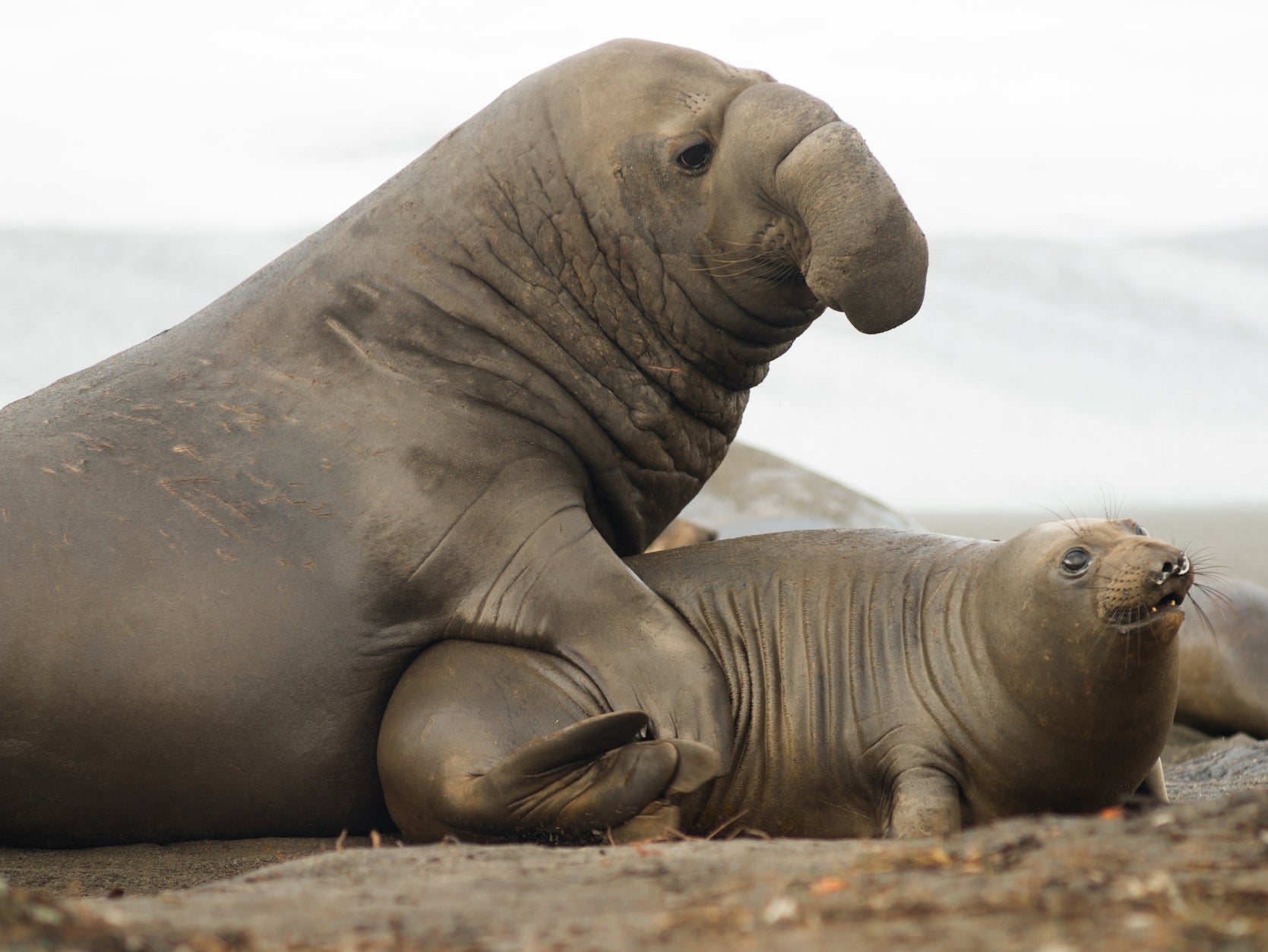Male elephant seals ‘risk death’ to eat more in order to bulk up and win females
Maintaining their huge bodies with enough calories comes at significant cost, research suggests

Your support helps us to tell the story
From reproductive rights to climate change to Big Tech, The Independent is on the ground when the story is developing. Whether it's investigating the financials of Elon Musk's pro-Trump PAC or producing our latest documentary, 'The A Word', which shines a light on the American women fighting for reproductive rights, we know how important it is to parse out the facts from the messaging.
At such a critical moment in US history, we need reporters on the ground. Your donation allows us to keep sending journalists to speak to both sides of the story.
The Independent is trusted by Americans across the entire political spectrum. And unlike many other quality news outlets, we choose not to lock Americans out of our reporting and analysis with paywalls. We believe quality journalism should be available to everyone, paid for by those who can afford it.
Your support makes all the difference.Male elephant seals are enormous. The largest adults can grow to 6 metres (20 feet) in length and weigh up to 4,000kg (9,000lbs). At these sizes they can be ten times larger than females – a trait known in the animal kingdom as extreme sexual dimorphism.
New research now reveals that in order for the males to maintain such enormous body sizes, they have to make significant sacrifices, which can ultimately cost them their lives.
Male northern elephant seals must stay close to the shore to eat more so that they will have a greater chance of mating, according to the study led by scientists at Baylor University in Texas.
Female elephant seals meanwhile are “deep-diving predators in open ocean habitats”, which is safer, though with less abundant food.
The researchers noted that among sexually dimorphic species, the larger sex often requires additional or different prey resources, and/or the sexes are different enough that their bodies can directly affect feeding behaviour.
“These biological differences can result in sex-specific foraging strategies – specific combinations of behaviour, morphology and physiology – that impact reproductive success and survival,” the authors said.
“Sex-specific foraging strategies can therefore intensify trait differences and play an essential role in the evolution and maintenance of sexual dimorphism.”
In order to learn more about how elephant seals' feeding habits differed between the males and females, the researchers used tracking devices to elephant seals over a nine-year period.
They attached satellite and radio transmitters capable of recording depth and location to more than 200 male and female elephant seals from 2006 to 2015.
They also measured the fat stores of the same seals multiple times over the course of their study to learn more about how they grew over time.
The satellites revealed that the foraging areas the males and females use are so different – with the females usually over 450km away from land, and diving to much greater depths, that the two sexes were only in the same areas for 4 per cent of the time while in the ocean.
The male elephant seals' foraging technique, in which they are “shallow-diving benthic predators in continental shelf habitats”, meant they were able to consume prey, such as sharks, cephalopods and fish, approximately four times faster than the females.
However, the additional food comes at a significant cost: By foraging near shore the males were risking their lives – they were approximately six times as likely to die while foraging than the females.
The scientists said that while the risks appeared to be higher for the males than for the females, the exact causes of death remain unknown, but it could be because being closer to the coast exposes them to risks from white sharks and killer whales, which are the two primary predators of northern elephant seals.
“It is difficult to determine the cause of mortality for wide-ranging animals that mostly die at sea,” the authors said.
“As a result, the frequency of all potential causes of northern elephant seal at-sea mortality (e.g. disease, injury, marine debris, predation, ship strikes, starvation) is unknown.”
However, they suggested “that males experience increased predation pressure because their foraging areas overlap closely with those of known predators that results in males' high mortality rate.”
The research is published in the journal Royal Society Open Science.
Join our commenting forum
Join thought-provoking conversations, follow other Independent readers and see their replies
Comments